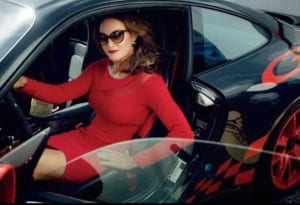To say that the Art of Banksy is one of the highlights in the Toronto visual arts’ landscape of this summer is perhaps an understatement. With 65,000 tickets sold to date and a rate of 14,000 visitors a week since its opening on June 19, this travelling exhibition, unauthorized by the artist, has generated such an enormous amount of interest in the city that it has earned an extension of another month. Torontonians have until August 19 to feast on the artwork of the artist who hides his identity and covers his face with a paper bag.
I personally was lucky enough to see some of his artworks in their original locations when I lived in Bristol, Banksy’s home turf, in the mid-2000s. Back then, I witnessed his art in its pure state: street art there where it is birthed. Leaving aside the debate of whether it is right or wrong to bring street art into an enclosed space and make people pay a ticket to see it, this type of art stays for a period of time and then it disappears. Therefore, the work of Steve Lazarides, curator of the show, has the merit to bring the work of this secretive artist to the general public.
In the absence of a real name, a face, and an obvious identity to reference to, a visit to the Banksy exhibition is a great way to learn about the most famous graffiti artist of this and any era through photos, paintings, and prints as well as the narrative of Steve Lazarides, who was part of his entourage for ten years.
The idea for the show to come to Toronto originates from a personal visit by Corey Ross (President of Starvox Exhibit Inc.) to the exhibition in Amsterdam last summer with his family. After the visit, a discussion ensued about what they had just witnessed. Any form of art makes viewers peel the layers off the surface of an aesthetically pleasant and entertaining experience. “You see the works of a mesmerizing artist and his political messages at the same time,” Corey says. Truly, underneath his pictures, Banksy’s political and social activism—opposition to wars, anti-capitalism, anti-consumerism, anti-establishment—is loud and clear.
Corey thinks that Toronto is the right place to test drive a new idea. What made Toronto win the bidding war against Athens and Stockholm are the following factors: the space at 213 Sterling Road, a former transformer factory; the neighborhood, a once industrial area, but soon to be home to the Museum of Contemporary Art, has developed a creative vibe; the public: “Toronto has the right public for this type of show” Corey says, “as demonstrated by the enormous success of the Kusama exhibition, totally embraced by the city at the AGO earlier this year.”
“The feedback received from the visitors is vastly enthusiastic,” he continues. People are polled via email after their visit and the positive feedback addresses largely three elements contributing to the success of the show, one being the space which perfectly fits an art show; next is the size and breadth of the exhibit—with sculptures, prints, paintings, photos of Banksy’s work and at work; the third is Lazarides’s own perspective with his inside stories on how Banksy established himself as an artist, how he created certain works, how he managed to get through security and so on. Lazarides’ narrative adds a layer of mystery around an artist whose art begins with an offense, trespassing of private properties, to leave his signature mark on a wall.
The 80 pieces—79 following the theft of one piece caught on video camera—were carefully curated by Lazarides. None of what is at the show was taken off the street. His original works are still there unless the landlords painted over them, or the police removed them, or another artist tagged them.
Lazarides, who started by taking photos to document Banksy’s work on site, then acted as his agent, ran his shows for art collectors to buy his pieces. So, the exhibition is a collection of pieces for shows mounted by Lazarides from 1998 till 2008. The second last room of the exhibit contains the Flag Wall and other pieces that were part of the ‘Barely Legal’ show Lazarides mounted in Los Angeles in 2006. These pieces were created for art collectors, then ended in private collections; therefore, only seen by a limited number of people. Some of the pieces were sold during Christmas parties at $35 and some were sold to movie stars. The final piece Forgive Us Our Trespassing was seen in a small art gallery in Los Angeles by no more than 2,000 people. It’s a giant 21-foot-high piece that was sitting in a warehouse for ten years because the collector did not have space in their house.
Judging by the sheer number of photos of Banksy’s pieces that cover social media these days—if it is ever appropriate to use social media as a barometer to reflect users’ preferences—Flower Thrower, Girl with the Red Balloon, Flying Copper, Flag Wall and Forgive Us Our Trespassing are among the most popular pieces of the show. Apparently, a couple had their photo taken with the latter piece in the background while the man went down on his knee to propose to his fiancée.
Lastly, on the way out, visitors are confronted with one of Banksy’s quotes. Much like Dante’s warning before descending into the underworld “Abandon hope all ye who enter here” Banksy warns: “We can’t do anything to change the world until capitalism crumbles. In the meantime, we should all go shopping to console ourselves.” I faced this dilemma myself as to whether I needed to console myself as I exited through the gift shop.

